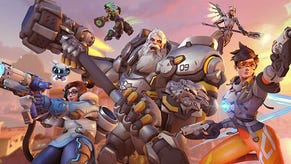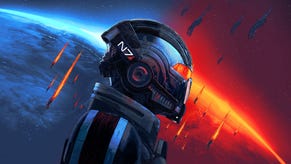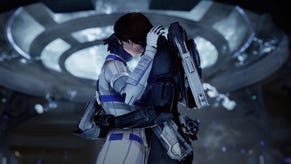Tech Analysis: Mass Effect 2
Adept.
There was always the sense that Mass Effect was a console game where the ambitions of the developer were held back significantly by the technology utilised. BioWare's use of Unreal Engine 3 was an inspired choice in creating the look and feel of its epic space opera, but in terms of the basic performance level the Xbox 360 version of Mass Effect was legendarily disappointing.
Digital Foundry's first, brief hands-on with the sequel was uniformly positive. But a hand-picked demo of a specific level is one thing, and in-depth analysis of the complete game is quite another. In this feature we'll be measuring Xbox 360 performance of both Mass Effect titles, then factoring in and evaluating the PC build of the sequel.
To get an idea of the many improvements BioWare has made to the new game, it's important to generate some context by going back to the original.
The sins of the original Mass Effect are many and varied, running with a multitude of frame-drops, texture-popping and torn frames. It's a shame in many ways because the overall art direction in the game, and the sheer scale of what BioWare created, is still extremely impressive, even in the present day, to the point where the recently released Dragon Age: Origins feels technologically more backwards in many ways.
But just how badly did Mass Effect run? It's a curious game in that certain sections operated relatively smoothly, while others performed horribly in comparison. Let's take a look.
While overall screen-tear at 24 per cent isn't hugely impressive, it even gets worse in context of a large array of duplicate frames. Dropped frames are followed by torn frames, emphasising the effect of poor performance. At its nadir in these clips, we can see frame-rates at 13FPS. Combine this with the poor streaming tech (Mass Effect is one of the few games with palpable gameplay advantages when installed to HDD), and the reputation for poor performance is well-deserved.
So, how have things changed in Mass Effect 2? While we have no direct like-for-like scenes that would represent any kind of useful measurement, we can still check out overall performance across a range of different scenes.
There are similarities with the first game. Cut-scenes can and will drop down to 20FPS in order to maintain the excellent detail levels BioWare demands from its characters, and there are still jumps in places between 20FPS and 30FPS during the arcade sections, but overall performance, particularly when it comes to tearing (now at 2.5 per cent in these clips - most of the time ME2 passes as a v-synced game), is obviously smoother.
This has all been achieved with a range of technological improvements across the board, combined with sharper level design more in tune with the limitations of the engine.
Another interesting element is the removal of anti-aliasing. The first Mass Effect included Unreal Engine 3's somewhat selective 2x multi-sampling AA. It's selective in that it appears to be applied to edges midway through rendering the frame, so while some of the image gets edge-smoothing lots of it doesn't. You can see this in a range of UE3 games, Gears of War 2 being a standout example.
For Mass Effect 2, BioWare appears to have turned off the anti-aliasing completely, presumably saving memory and GPU cycles in the process. Depth of field and bloom are used instead, doing a surprisingly good job. While not quite up there with the likes of Final Fantasy XIII, the DOF effect works extremely well in producing a great cinematic effect during the cut-scenes.
BioWare's implementation of cut-scenes from a conceptual standpoint is simple but effective, and hasn't changed much from the first game. The developers impart their plot by making you a part of it, directing the dialogue. The actual choices you make vary dramatically from one scene to another, but the point is that you feel more attached to the story because you become a part of it. You're still playing the game, not just watching it. Mass Effect 2 introduces QTE-style push-button "events" to further mix up the action.
Technologically-speaking, the key innovations in the cut-scenes concern improvements in the rendering of the characters. While the models themselves appear to be similar in terms of detail level from Mass Effect through to its sequel, the implementation of what looks like sub-surface scattering makes for more impressive skin-shaders and thus more realistic-looking characters.

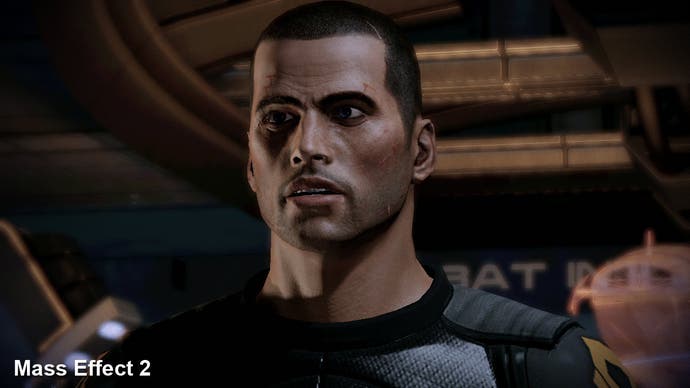
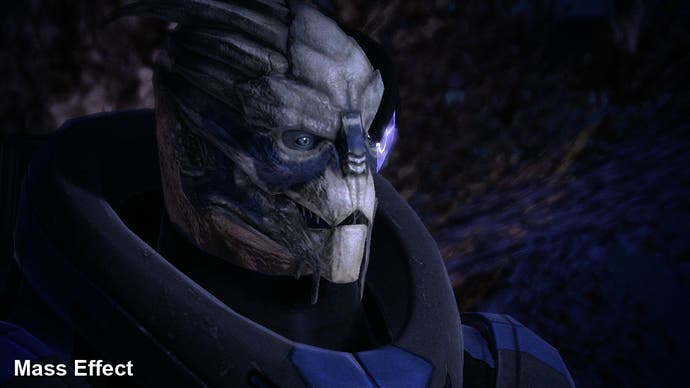

Shadowing has been vastly improved (flickering penumbras are much better), plus shadows remain consistent when multiple characters are in play, something that wasn't the case in the first game. The flickering penumbras of the first game that impacted on the quality of the characters have also been improved in the sequel with higher-quality shadowmaps and superior resolution.

